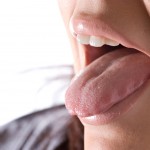
Burning mouth syndrome is a chronic orofacial pain condition, characterized by a burning and painful sensation of the oral mucosa, usually on the anterior two-thirds or tip of the tongue. Its pathophysiology is not well understood, and a wide range of treatments have been employed for burning mouth syndrome (BMS). These include anxiolytics, antidepressants, and psychological therapies, natural substances including agents such as capsaicin, catuama, and chamomile, alpha-lipoic acid (ALA), gabapentin (GABA), pregabalin, topical lubricant, acupuncture, benzydamine hydrochloride, electromagnetic stimulus, melatonin, ultramicronized palmitoylethanolamide, and cognitive therapy. To date there is no consensus on the best treatment.
The aim of this review was to investigate the effectiveness of all treatments for the relief of pain associated with BMS as compared with no intervention or placebo.
Methods
Searches were conducted in the Cochrane Database of Systematic Reviews and Central Register of Controlled Trials (CENTRAL), Medline, Embase, Scopus, Web of Science, ClinicalTrials.gov, the International Clinical Trials Registry Platform, and the ProQuest Dissertation and Theses database. Randomised controlled trials (RCTs) in adults (>18yrs) of any treatment for BMS were considered. Paired independent reviewers screened and selected studies and extracted data with risk of bias being assessed using the Cochrane Risk of Bias Tool 2.0 .The primary outcome was pain relief or burning sensation, and both terminologies were named “pain.” Secondary outcomes were side effects, quality of life, salivary flow, and TNF-α and interleukin 6 levels. Mean difference (MD) and 95% CI were calculated for continuous outcomes. The minimal important difference to consider a therapy beneficial against placebo was an MD of at least -1 for relief of pain. A network meta-analysis (NMA) was undertaken.
Results
- 44 RCTs involving a total of 2283 patients were included.
- Most studies were conducted in Europe (71%) and after 2010 (70.45%).
- 3 studies were considered to be at low risk of bias, 14 at a high risk of bias and 27 at unclear risk.
- 24 studies contributed to the meta-analysis with the following treatments achieving a minimal important difference in pain levels v placebo (see table).
| Intervention | No of studies | MD (95%CI | Certainty of evidence |
| Anxiolytic (clonazepam) | 5 | -1.88 (-2.61 to -1.16) | moderate |
| Photobiomodulation therapy (PBMT) | 5 | -1.90 (-3.58 to -0.21) | low |
| Pregabalin | 5 | -2.40 (-3.49 to -1.32) | very low |
- Antidepressants did not achieve the minimal important difference in any analysis.
- No treatment improved the quality of life when compared with placebo.
Conclusions
The authors concluded: –
Among all tested treatments, only clonazepam is likely to reduce the pain of BMS when compared with placebo. The majority of the other treatments had low and very low certainty, mainly due to imprecision, indirectness, and intransitivity. More randomized controlled trials comparing treatments against placebo are encouraged to confirm the evidence and test possible alternative treatments
Comments
In 2016 we looked at the updated Cochrane review of interventions for treating burning mouth syndrome (Dental Elf – 28th Nov 2016) That review included 23 RCTs and at the time concluded,
there is insufficient evidence to support or refute the use of any interventions in managing BMS. Further clinical trials, with improved methodology and standardised outcome sets are required in order to establish which treatments are effective.
Since then, a number of additional reviews have been published most recently one of topical interventions for BMS which we looked at earlier this month (Dental Elf – 3rd Oct 2022). This new review registered a protocol on PROSPERO and undertook an extensive database search identifying 44 RCTs. Nineteen of the trials included in the Cochrane review are included in this new review along with 13 RCTs that have been published since publication of the Cochrane review. The Cochrane reviewers recommended that trials of higher methodological quality be undertaken, and it is disappointing to note that only 3 RCTs included in this review were considered to be at low risk of bias.
While this review has included a larger number of studies the numbers relating to particular treatments are small and the quality is low, so the certainty of evidence related to any single treatments is low to very low with the exception of clonazepam for which there is moderate certainty evidence. Other reviews have also indicated that clonazepam may be effective for BMS (Dental Elf – 12th Jan 2021). However, the studies do use different treatment routes and dosages. Consequently, additional high quality and well reported trials using core outcomes sets and with a minimum of 3 months duration are needed to establish the most effective treatments for BMS.
Links
Primary Paper
Alvarenga-Brant R, Costa FO, Mattos-Pereira G, Esteves-Lima RP, Belém FV, Lai H, Ge L, Gomez RS, Martins CC. Treatments for Burning Mouth Syndrome: A Network Meta-analysis. J Dent Res. 2022 Oct 8:220345221130025. doi: 10.1177/00220345221130025. Epub ahead of print. PMID: 36214096.
Other references
Dental Elf – 3rd Oct 2022
Dental Elf – 28th Nov 2016
Dental Elf – 12th Jan 2021
